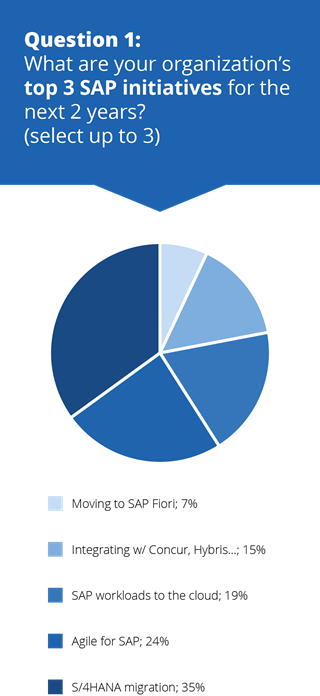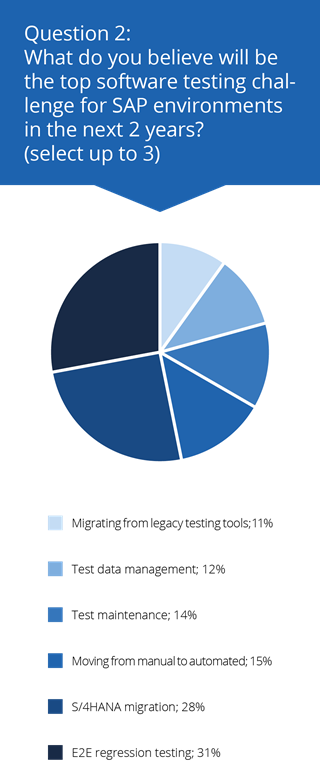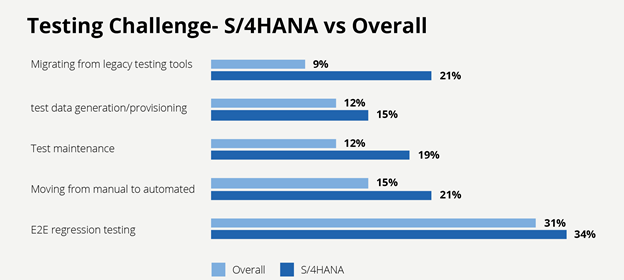Q1 2025 roadmap update for customers: AI, cloud-first, and more
See our vision for quality engineering in 2025 and the innovation...
Tricentis recently surveyed 848 SAP project leaders to assess enterprises’ top SAP transformation
priorities and testing challenges for the next 2 years. We focused on 3 core questions:
Key findings from the responses include:
To examine what’s driving investment in SAP, we asked “What are your organization’s top 3 SAP initiatives for the next 2 years?“ The results were:

SAP S/4HANA migration emerged as the top priority for the next 2 years. This was not unexpected, given SAP’s decision to “sunset” support for SAP ECC in 2025. However, we found that the move to S/4HANA is being driven largely by increased C-level focus on digital transformation and the business committing to S/4HANA as the centerpiece of the “intelligent enterprise.”
Based on respondents’ comments, SAP SAPPHIRE NOW conversations, and prospect/customer feedback, organizations moving to S/4HANA are not doing so merely to run the latest versions of their SAP applications. Rather, they see S/4HANA as the platform for the digital transformation of their business. Their ultimate goal is to connect all the applications, devices, and users involved in their business processes.
The decision to use SAP as the platform for digital transformation has far-reaching consequences. In fact, there are really four distinct transformations involved in this move:
We also asked about the top challenges anticipated over the next two years. The top answer overall was end-to-end regression testing for SAP apps and beyond. When an organization decides that S/4HANA will serve as the centerpiece of their digital transformation, they connect it to all the applications, devices, and users involved in transactions that promote digital transformation. This has distinct impacts in terms of testing.

It is interesting to note the different challenges faced by respondents who indicated they had already migrated to S/4HANA:

Here, Migration from legacy testing tools rises from #6 to #3. This suggests that once S/4HANA becomes a reality, many organizations discover that their legacy testing tools aren’t ideal for this new interconnected and rapidly-changing environment.
See our vision for quality engineering in 2025 and the innovation...
Hear experts from Government Technology and Tricentis discuss how...
Explore the key challenges public sector agencies face in...
Scale and run test automation across your full testing toolchain...
Hear our panel of experts share their perspectives on this and...